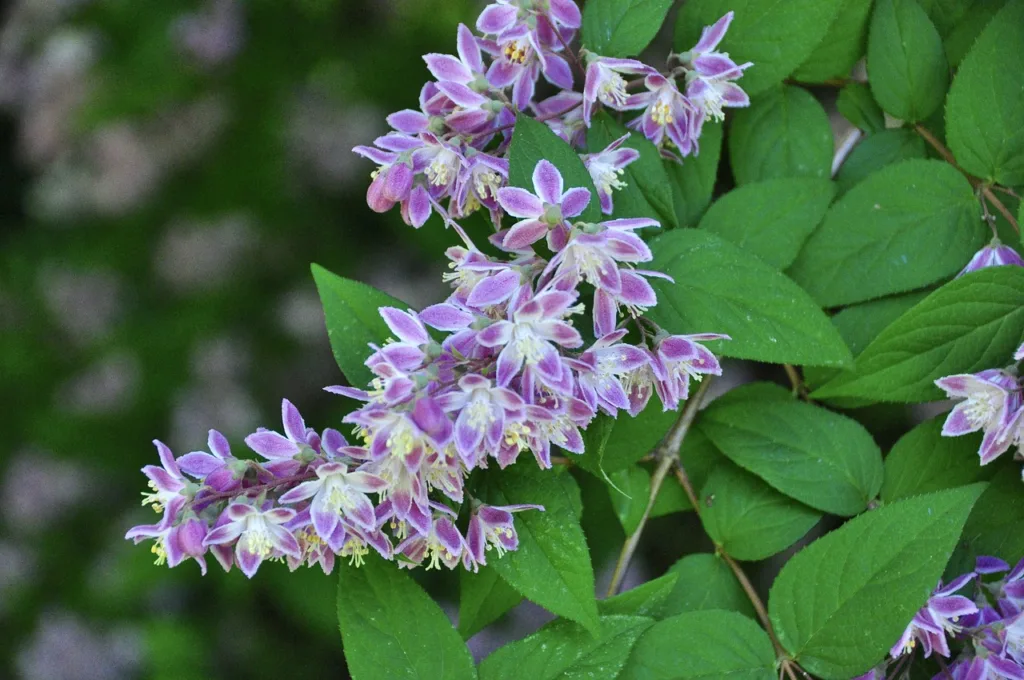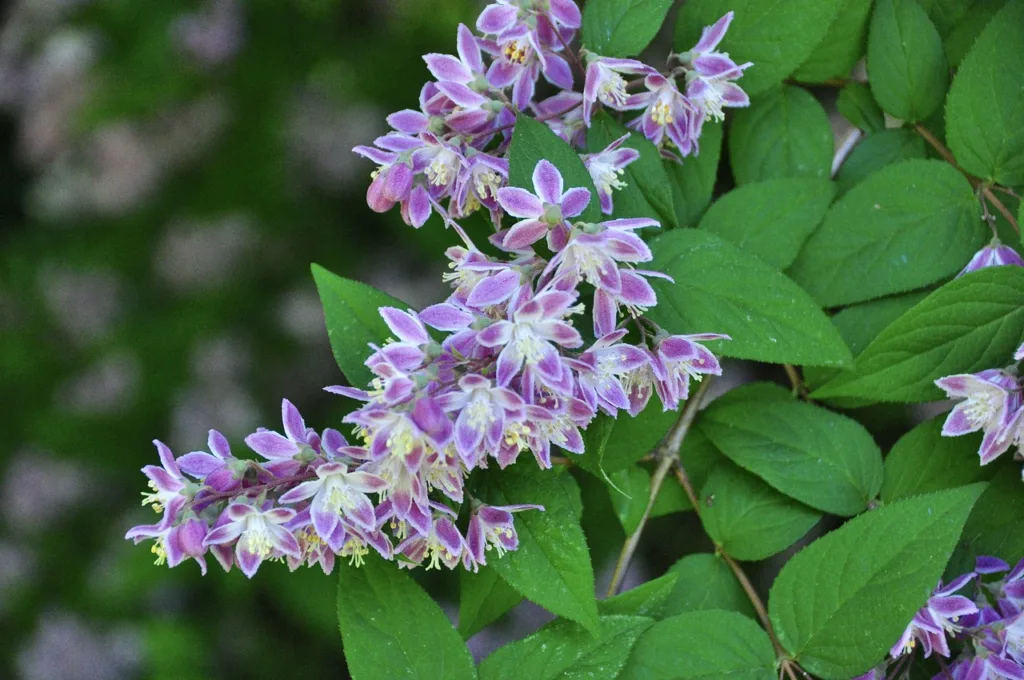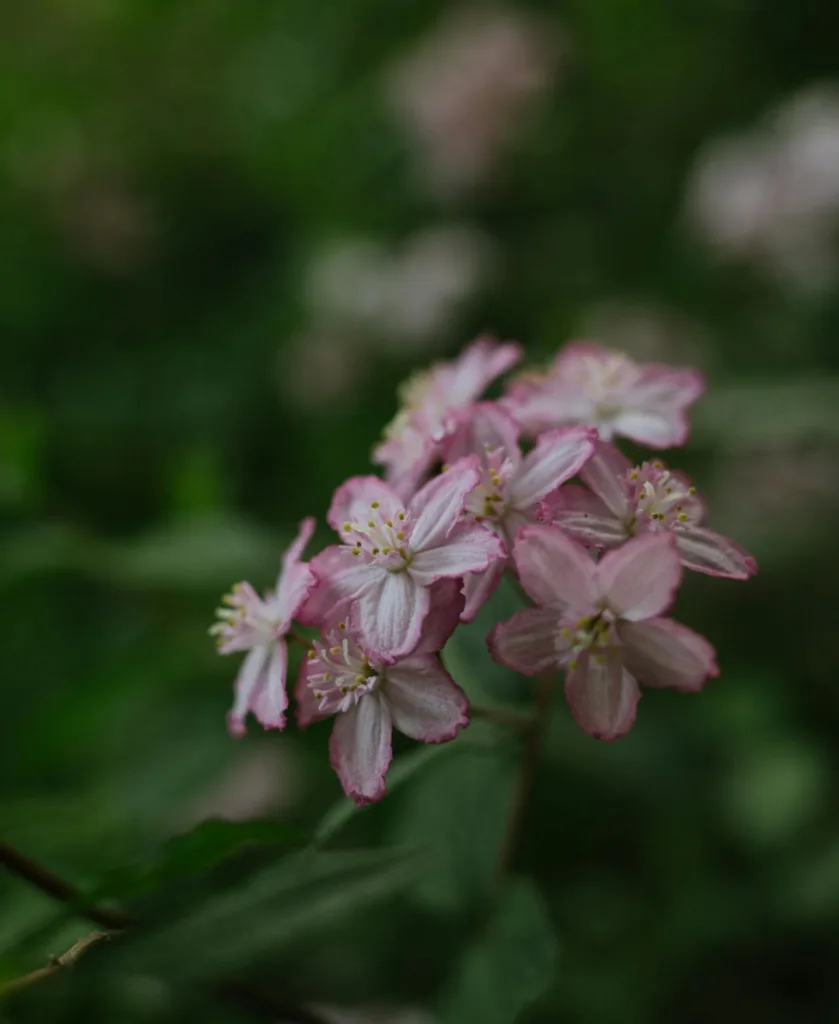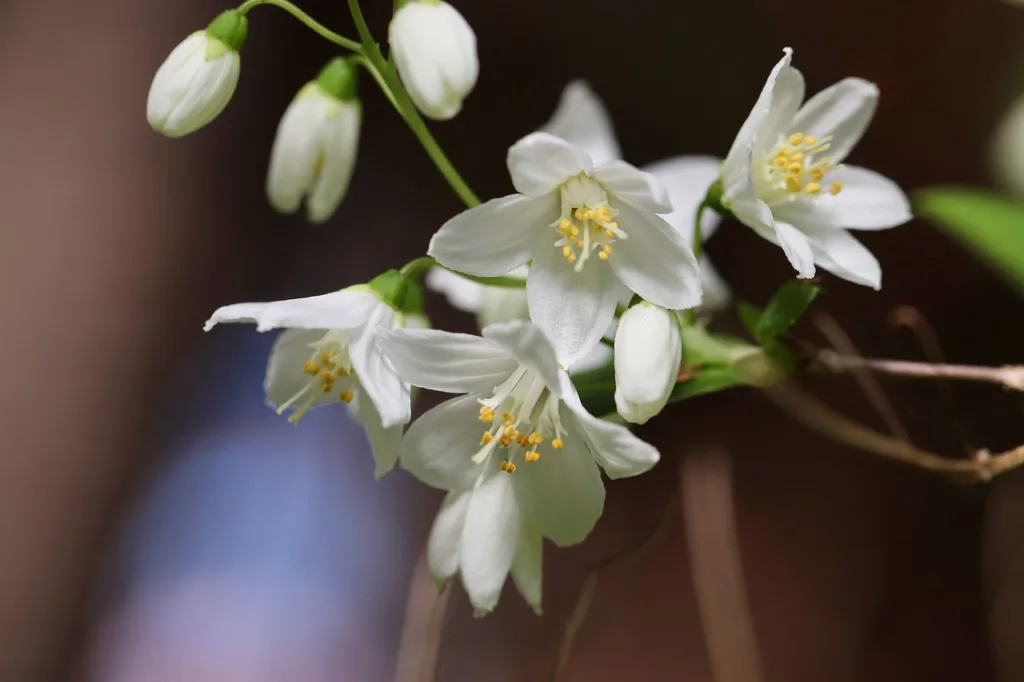Deutzia is a genus of deciduous or semi-evergreen shrubs belonging to the family Hydrangeaceae. These ornamental shrubs are valued for their clusters of showy flowers, which adorn the branches in spring to early summer.
Native to Asia and Central America, Deutzia species are cultivated for their attractive leaves, beautiful blooms, and all-around garden landscapes.
Deutzia is a beautiful flowering shrub that can add a touch of elegance to any garden or landscape. Named after the botanist Johann van der Deutz, this genus consists of around 60 species, with the most common being Deutzia Scabra.
Known for its delicate blooms and lush green foliage, Deutzia is a popular choice for both experienced and novice gardeners.
In this article, we will explore the various aspects of growing and caring for Deutzia, from planting to maintenance and everything in between.
| Taxonomic Rank | Classification |
|---|---|
| Kingdom | Plantae |
| Division/Phylum | Angiosperms |
| Class | Eudicots |
| Order | Cornales |
| Family | Hydrangeaceae |
| Genus | Deutzia |

Choosing the Right Variety
Before delving into the nitty-gritty of growing and caring for Deutzia, it is essential to choose the right variety for your garden.
Deutzia comes in a wide range of species, each with its unique characteristics. Some common varieties include:
Deutzia Scabra: This is the most popular species known for its showy white or pink flowers that bloom in spring. It can reach a height of 6 to 10 feet, making it ideal as a focal point in larger gardens.
Deutzia gracilis: This compact variety grows up to 3 feet tall and produces delicate, star-shaped white flowers. It is well-suited for smaller gardens or border plantings.
Deutzia Crenata: With its abundance of pink or white flowers, this species can reach a height of 6 to 8 feet. It is perfect for creating hedges or screening, offering both beauty and privacy.
Once you have identified the specific variety that suits your garden’s needs, it’s time to move on to the planting process.
Planting Deutzia
Deutzia thrives in well-draining soil and prefers a sunny to partially shaded location. Here are the steps to successfully plant your Deutzia shrub:
Choose the right spot: Look for an area that receives at least 6 hours of sunlight per day. While Deutzia can tolerate some shade, excessive shade can result in reduced flowering.
Prepare the soil: Before planting, ensure that the soil is rich in organic matter and has good drainage. Add compost or well-rotted manure to improve the soil’s fertility and structure.
Dig the hole: Dig a hole that is slightly larger and deeper than the root ball of your Deutzia shrub. This will give the roots ample space to spread and establish.
Place the shrub: Gently remove the shrub from its container and place it in the center of the hole. Ensure that the top of the root ball is level with the surrounding soil.
Backfill the hole: Fill the hole with the excavated soil and gently firm it around the shrub. Avoid firming it too tightly, as this can restrict root growth.
Water thoroughly: After planting, water the shrub thoroughly to settle the soil and promote root establishment.
Caring for Deutzia
Once your Deutzia shrub is planted, it requires proper care and maintenance to thrive and bloom abundantly. Let’s explore the key aspects of Deutzia care:
Watering
Deutzia prefers evenly moist soil, especially during the growing season. However, it is important not to overwater the shrub, as excessive moisture can lead to root rot. Here are some watering tips for Deutzia:
Establishment phase: Water newly planted Deutzia shrubs once or twice a week for the first few months until they establish a strong root system.
Regular watering: During the active growth period, provide the shrub with around 1 inch of water per week. Deep watering is preferable to frequent shallow watering.
Watering frequency: Adjust the watering frequency based on the local weather conditions and rainfall. Water more during hot and dry periods, and reduce watering during rainy periods.

Fertilizing
To promote healthy growth and abundant flowering, it is beneficial to feed your Deutzia shrub with the right balance of nutrients. Here’s what you need to know about fertilizing Deutzia:
Timing: Apply a balanced slow-release fertilizer in early spring, just before new growth begins. Avoid fertilizing in late summer or fall, as it can stimulate tender growth that may be damaged by frost.
Application: Follow the manufacturer’s instructions regarding the amount and frequency of fertilizer application. Generally, apply fertilizer evenly around the drip line of the shrub.
Organic alternatives: If you prefer organic options, you can use compost or well-rotted manure as a natural fertilizer for your Deutzia shrub.
Pruning
Pruning is an essential aspect of Deutzia care, as it helps maintain the shrub’s shape, promote airflow, and encourage healthy flowering. Here’s a guide to pruning Deutzia:
Timing: Prune Deutzia shrubs immediately after flowering, usually in late spring or early summer. This allows the shrub to set new buds for the following year.
Deadheading: Remove spent flowers by cutting just above a healthy leaf node. This will prevent the formation of seed heads and redirect the plant’s energy toward new growth.
Thinning and shaping: To maintain an open and balanced form, selectively remove older, woody stems from the base of the shrub. Also, trim back any branches that are crossing or rubbing against each other.
Pests and Diseases
Deutzia is generally relatively pest and disease-resistant. However, like any plant, it can occasionally face certain issues. Here are some common problems associated with Deutzia:
Aphids: These small, soft-bodied insects can cluster on the undersides of leaves, causing distortion and stunted growth. Use insecticidal soaps or neem oil to control aphid infestations.
Powdery mildew: This fungal disease appears as a powdery white coating on the leaves stems, and flowers. Provide good air circulation and avoid overhead watering to prevent powdery mildew.
Leaf spot: Leaf spot diseases can cause dark spots or lesions on the foliage. Remove and destroy infected leaves and ensure proper sanitation to prevent leaf spots.
Winter Care
While Deutzia shrubs are generally hardy, some varieties may require protection during harsh winters. Here are some tips for winter care:
Mulching: Apply a layer of organic mulch around the base of the shrub to insulate the roots and regulate soil temperature.
Protection: In colder regions, consider wrapping the shrub with burlap or using protective covers to shield it from freezing temperatures and harsh winds.
Pruning: Avoid heavy pruning in the fall, as it can stimulate new growth that may be prone to winter damage. Save major pruning for late spring after the shrub has flowered.

Conclusion
Growing and caring for Deutzia can be a truly rewarding experience for gardeners of all skill levels. By choosing the right variety, providing optimal growing conditions, and following proper care practices, you can enjoy the beauty and elegance of these stunning shrubs in your garden.
Remember to water diligently, fertilize appropriately, prune thoughtfully, and keep an eye out for any potential pests or diseases.
With a little love and attention, your Deutzia shrub will thrive and reward you with a profusion of gorgeous blooms year after year. So go ahead, plant a Deutzia, and watch your garden come to life with its enchanting presence.
FAQs
What are the leaves of Deutzia?
- Deutzia leaves are generally opposite, simple, and serrated. They contribute to the overall attractiveness of the shrub with their green color and serrated edges.
Which is the best Deutzia?
- Determining the “best” Deutzia depends on specific preferences and garden requirements. Popular varieties include:
- Deutzia gracilis (Slender Deutzia): Compact and adorned with white flowers.
- Deutzia scabra ‘Pride of Rochester’: Known for its larger white blossoms.
What is Deutzia used for?
- Uses of Deutzia:
- Ornamental Planting: Deutzia is widely used for ornamental purposes in gardens, borders, and landscaping.
- Floral Displays: The profuse clusters of flowers make it a visually appealing choice during the blooming season.
- Hedging: Some varieties can be used in hedging for their arching growth habit.
What is another name for Deutzia?
- Deutzia is commonly known by its botanical name, and there is no widely used alternative common name for this genus.

